Articles & Videos
Four key strategies for a successful flipped classroom with BitMaths
Categories
Subscribe to our newsletters
Receive teaching resources and tips, exclusive special offers, useful product information and more!
Four key strategies for a successful flipped classroom with BitMaths
BitMaths 13/8/24

A flipped classroom is a pedagogical approach involving students’ individual computer-based learning prior to a lesson, followed by a dynamic classroom experience. It inverts the traditional model and allows teachers to facilitate in-class learning through group activities, discussion and practice.
A key benefit of flipped classrooms is increased time for active learning. This means more time for practice, problem-solving, critical and creative thinking, inquiry and discussion. It also provides more opportunities for targeted individual instruction and for students to seek help. 1 2 3 4
Of course, flipped classrooms also face challenges. The most significant challenge is finding or creating suitable content for students to engage with before the lesson. Teachers may struggle to source appropriate content that matches the appropriate ability level, is pedagogically sound and cohesive. If a variety of sources are used to cover the content, students may find it confusing or jarring to jump between different styles in explanation, use of language and lesson formats. 3 4 Teachers also report struggling to find the time to create their own content and having difficulties with IT. 3
So how can teachers enjoy the benefits of flipped classrooms without being weighed down by the challenges? Here are four key strategies to improve the success of flipped classrooms.
1. Use consistent and familiar teaching resources
To overcome the adversity of using mixed resources, try using a consistent platform of content delivery. This might include videos, presentations or documents in the same style or format. By using resources with familiar styles, students can engage in learning immediately, without the barrier of managing varied resource types. BitMaths’ online platform uses teaching slideshows and videos to deliver content with consistency. Each lesson follows a similar sequence, uses consistent language and includes familiar elements and activity types throughout, such as Worked examples, Your turns and Think bits.
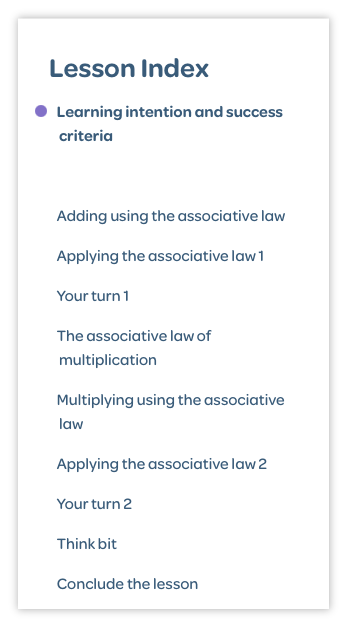
Example of a lesson sequence from BitMaths: NA705 Laws of Arithmetic (Australian Curriculum; Victorian Curriculum), NA402 Laws of Arithmetic (NSW Syllabus).
2. Ensure resources are student-friendly and thoughtfully designed
To support students as they work independently and at their own pace, ensure teaching resources include student-friendly language and are thoughtfully designed. It is important for the content to be visually engaging, and suitable for a range of reading and maths ability levels.
Written and designed with the student in mind, BitMaths offers cleverly planned slideshows with engaging stimulus content. Topics use videos, animations and stepped-out examples to deliver content. The language is friendly and the word count is kept to a minimum to help students navigate through a topic at their own pace.
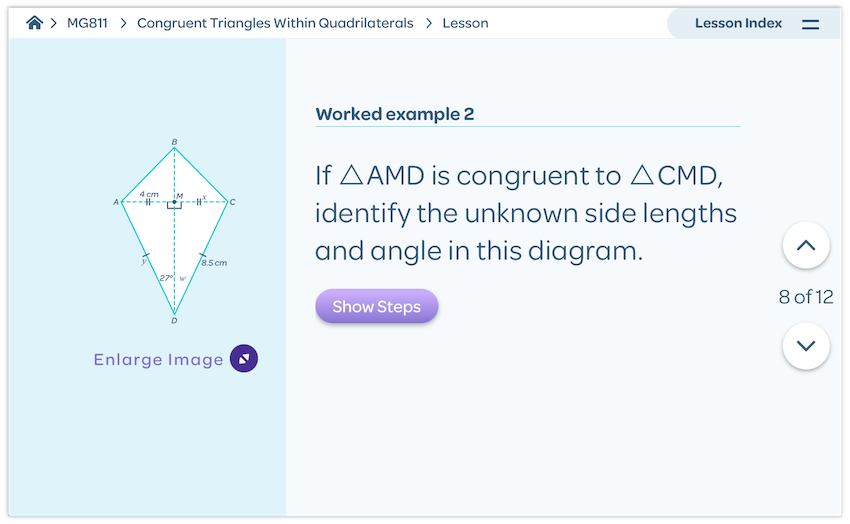
Example of stepped-out content from BitMaths: MG811 Congruence of Quadrilaterals (Australian Curriculum; Victorian Curriculum), MG419 Congruence of Quadrilaterals (NSW Syllabus).
3. Choose interactive resources
To help students engage and be active in the learning process, try selecting interactive resources. Interactive activities have two main benefits in a flipped classroom scenario, they help motivate and engage students and they provide automatic marking.
Since BitMaths is an interactive online program, every BitMaths lesson is pedagogically designed to engage learners. Rather than simply explaining and displaying content, BitMaths uses a questioning technique to encourage thinking and make students active participants in the learning process. Answers, explanations and detailed solutions are revealable at the click of a button.
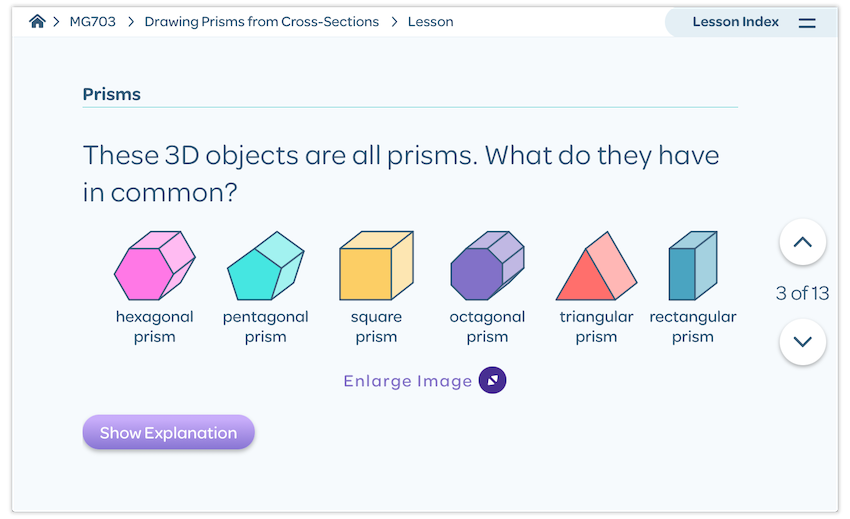
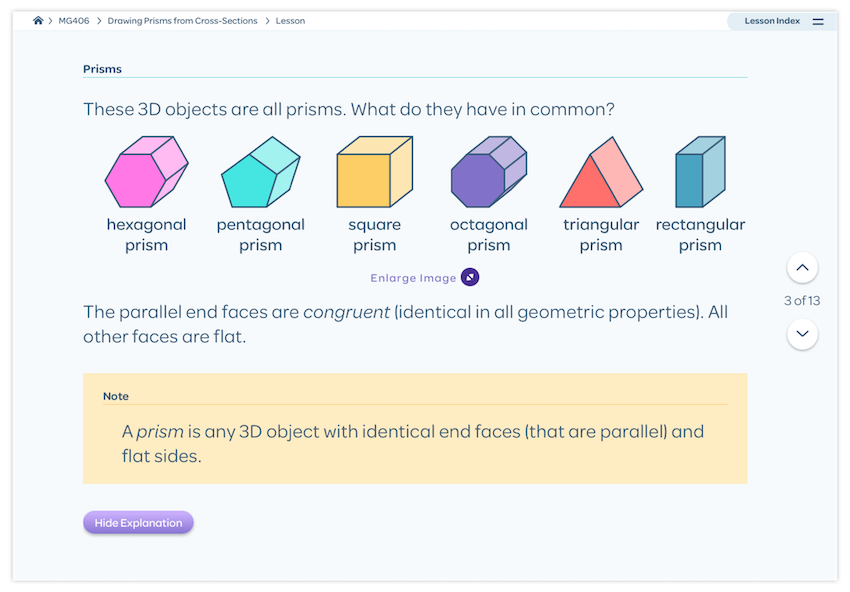
Example of a question and detailed explanation from BitMaths: MG703 Views of Prisms and Solids (Australian Curriculum; Victorian Curriculum), MG406 Views of Prisms and Solids (NSW Syllabus).
What’s more, all BitMaths activities are automatically marked. All results are collated in class trackers so you can easily identify which students succeeded or struggled with the activities and pinpoint any concepts that the class had difficulties with as a whole. This allows you to make informed decisions on how to best use your follow-up flipped lesson. Is there a specific concept you need to unpack and discuss as a class? Is there a specific student you need to spend more time with?
4. Introduce flipped classrooms incrementally
To use a flipped classroom approach requires a substantial mindset shift for students who are used to traditional instruction. It requires students to be more motivated and accountable for their learning. To help students adjust, introduce flipped classrooms incrementally. 4 This might involve allocating different sessions of the week to flipped learning and traditional learning, and ensuring students are confident navigating through content. BitMaths’ scaffolded slideshows have two user-friendly modes to facilitate flipped learning. For in-class projection, teachers can use the *Teach Concept* mode, while the *Student Text* mode is ideal for students’ independent use on digital devices.
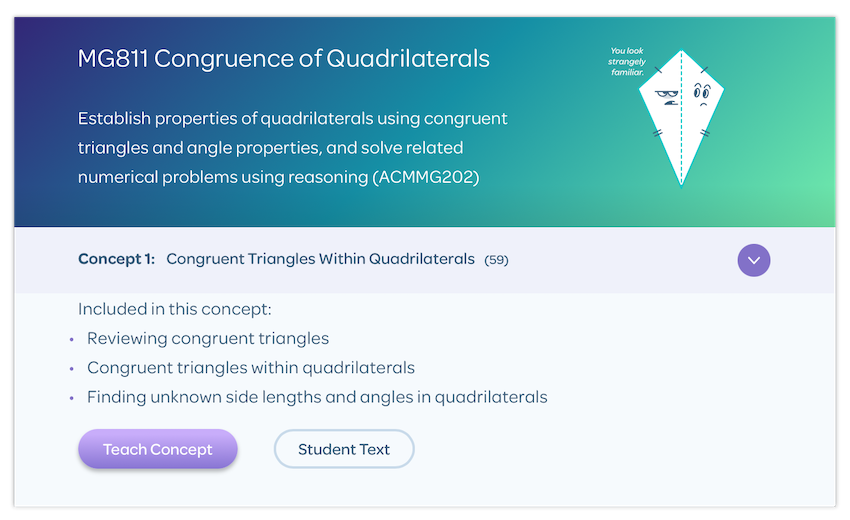
Since BitMaths can be used for both traditional instruction and self-paced learning, students can become familiar with BitMaths lessons from classroom use and understand what they are required to do when switching to flipped learning. It’s the perfect resource to use for both methods of instruction!
Example of ‘Teach Concept’ and ‘Student Text’ teaching modes from BitMaths: MG811 Congruence of Quadrilaterals (Australian Curriculum; Victorian Curriculum), MG419 Congruence of Quadrilaterals (NSW Syllabus).
References
Muir, T 2017, ‘Flipping the mathematics classroom: affordances and motivating factors’, The Mathematics Educator, vol. 17, no. 1 & 2, pp. 105-130, viewed 22 July 2024, https://math.nie.edu.sg/ame/matheduc/tme/tmeV17_1/paper5.pdf↩
Muir, T 2016, ‘No more ‘What are we doing in maths today?’ Affordances of the flipped classroom approach’, viewed 22 July 2024, https://hdl.handle.net/102.100.100/523963↩
Cevikbas, M & Kaiser, G 2020, ‘Flipped classroom as a reform‐oriented approach to teaching mathematics’, The International Journal on Mathematics Education, vol. 52, no.7, pp. 1291-1305, doi: 10.1007/s11858-020-01191-5↩
Fung, C-H, Besser, M & Poon, K-K 2021, ‘Systematic literature review of flipped classrooms in mathematics’, EURASIA Journal of Mathematics, Science and Technology Education, vol.17, no.6, viewed 22 July 2024, https://doi.org/10.29333/ejmste/10900↩